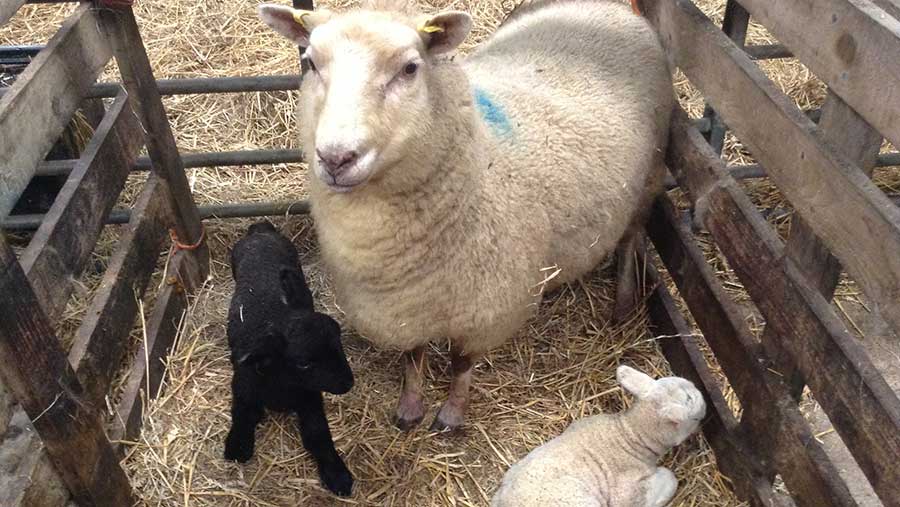5 top tips to prevent watery mouth in lambs
 sheep and lamb
sheep and lamb Watery mouth is a bacterial infection caused by E coli which affects new born lambs. The bacteria is found in the environment and lambs are born with no immunity against it.
When infection occurs, the bacteria colonises in the guts where it rapidly multiplies. Clinical signs include lethargy, a high temperature, drooling, constipation and a distended abdomen.
See also: Sudden deaths in lambs
With 49% of all lamb losses occurring between birth and 48 hours of age with an estimated cost of £20-25/lamb lost, controlling this disease is of paramount importance to help prevent lamb losses in this age group and so improve flock profitability.
It is also one of the main reasons prophylactic antibiotics are used in sheep flocks, a practice which must be avoided wherever possible.
The following steps will help reduce the incidence of watery mouth in your lambs:
Colostrum management
Newborn lambs require 10% of their body weight in colostrum within the first 24 hours of life, after which the gut is no longer able to absorb the antibodies that help prevent disease.
Twin and triplet lambs are most likely to suffer from lack of colostrum because of competition, especially when they are the last lamb to be born.
It may be advisable to supplement these lambs, ideally with the ewe’s colostrum, by bottle feeding or stomach tubing to help prevent this.
Ensuring a clean environment
Wet, dirty bedding are ideal conditions for bacteria to multiply, so densely stocked and overcrowded conditions should be avoided to help straw to stay dry.
This disease is often seen towards the end of the lambing season in indoor flocks when environmental pathogens have built up over time.
Mothering up pens should be mucked out and disinfected between each ewe to help prevent this, with cleansing removed from the lambing pens wherever possible.
Hygiene
It is essential to ensure equipment is clean and disinfected.
Ideally, separate stomach tubes should be used for sick lambs and those which are being stomach tubed as a preventative measure. At the very least, kit should be disinfected between uses to help prevent the spread of infection.

Ewe body condition score and nutrition
This is something that will need to be considered well ahead of lambing itself. Lowland ewes should be condition score 3 on a 5-point scale at the point of lambing.
Having ewes in the correct condition and on the correct plane of nutrition in the run up to lambing will help to: improve colostrum production and quality; minimise birthing difficulties; and improve mothering ability. These will all aid lamb vigour at birth and help to ensure sufficient colostrum is received.
Isolation of sick lambs
If you are unfortunate enough to have sick lambs due to watery mouth, or any other disease for that matter, a designated sick lamb area away from other new born lambs can help prevent the spread of disease.
This should be somewhere that they can be kept with the ewe wherever possible but where there is minimal contact with other new born lambs and frequent observation can still occur.
Shona Young is practice principal at Westpoint Farm Vets, Horsham
